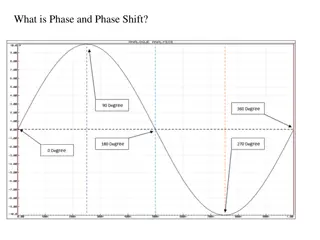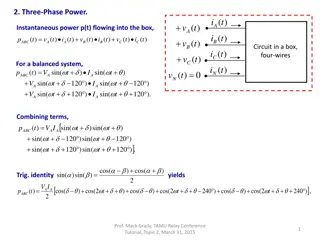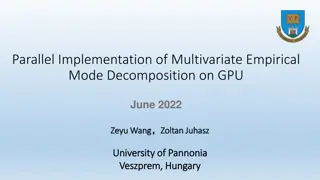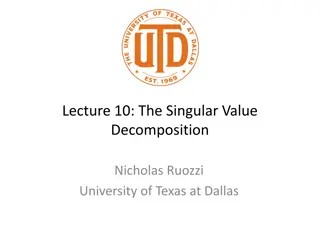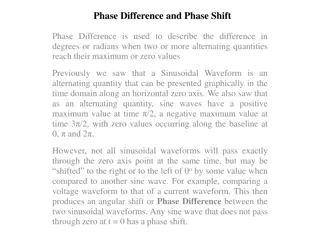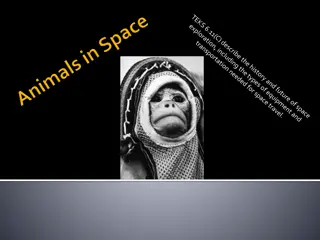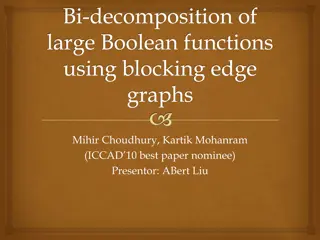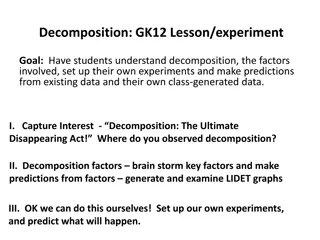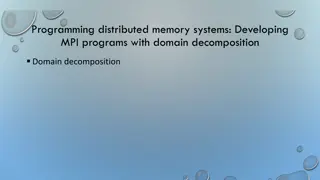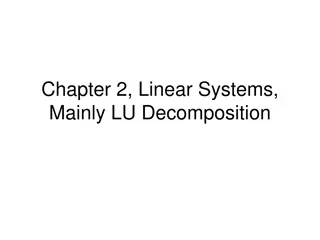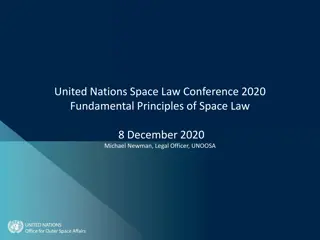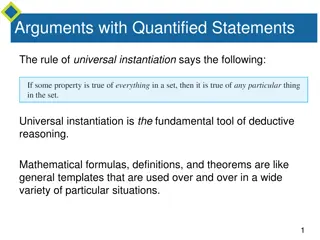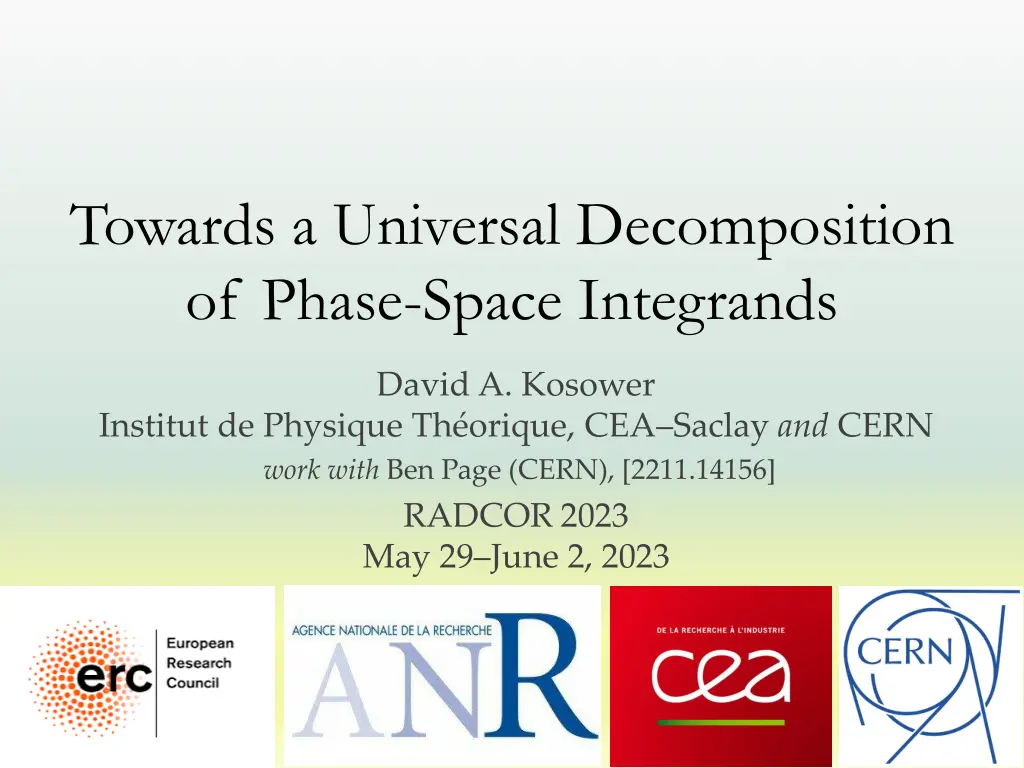
Universal Decomposition of Phase-Space Integrands in High-Energy Physics
Explore the advancements in understanding phase-space integrands in high-energy physics, focusing on techniques to tame jets and cancel divergences. Discover approaches at different levels of perturbation theory and the challenges in aligning phase spaces for virtual and real emissions.
Download Presentation

Please find below an Image/Link to download the presentation.
The content on the website is provided AS IS for your information and personal use only. It may not be sold, licensed, or shared on other websites without obtaining consent from the author. If you encounter any issues during the download, it is possible that the publisher has removed the file from their server.
You are allowed to download the files provided on this website for personal or commercial use, subject to the condition that they are used lawfully. All files are the property of their respective owners.
The content on the website is provided AS IS for your information and personal use only. It may not be sold, licensed, or shared on other websites without obtaining consent from the author.
E N D
Presentation Transcript
Towards a Universal Decomposition of Phase-Space Integrands David A. Kosower Institut de Physique Th orique, CEA Saclay and CERN work with Ben Page (CERN), [2211.14156] RADCOR 2023 May 29 June 2, 2023
Taming Jets Hair LO each jet modeled by a lone parton NLO virtual: same; IR divergences in loop integrals real-emission, some jets modeled by pair, IR divergences in phase-space integrals NNLO double-virtual: lone parton, IR divs in loop integrals mixed: mixed divergences double-real: IR divergences in phase-space integrals Need to cancel divergences Ideally point-by-point in jet phase space
Approaches at NLO Cancel in physical observables (not point by point in jet phase space) Slicing integrate analytically in singular regions, numerically in hard regions Giele & Glover; Giele, Glover, & DAK modern revival with n-jettiness & ?Tslicing Stewart, Tackmann, & Waalewijn; Catani & Grazzini Subtraction subtract singular behavior, resulting integral finite integrate singular functions analytically, subtracted numerically Catani & Seymour; Frixione, Kunszt, & Signer; Nagy & Soper; Bevilacqua, Czakon, Kubocz, & Worek NNLO Generalizations of NLO subtraction schemes Gehrmann-De Ridder, Gehrmann, & Glover; Weinzierl; Braun-White, Glover, Preuss Del Duca, Duhr, Kardos, Somogyi, Sz r, Tr cs nyi, & Tulip nt; Czakon; Magnea, Maina, Pelliccioli, Signorile-Signorile, Torrielli, Uccirati; Bertolotti, Torrielli, Uccirati, Zaro; Caola, Devoto, Melnikov, R ntsch, Signorile-Signorile, Tagliabue, Hybrid schemes: combineCatani Seymour subtraction with slicing Stewart, Tackmann, & Waalewijn; Catani & Grazzini Hard problem: complicated and general algorithm emerging slowly Talks here: Bertolotti; Marcoli; Signorile-Signorile; Braun-White
Framework Virtual @ NLO: ? partons ? (proto)jets Same mapping as LO (tree-level) ? ? ?? ?? Real Emission @ NLO: ? + 1 partons ? (proto)jets ? ?? ?+1 ?? ?? integrate over ?? Do phase-space integral exactly in ? = 4 2? Mixture of analytic and numerical Want to align phase spaces, expose analogy between virtual and real-emission
Framework Initial view: express protojets in terms of partons clustering ??= ??( ?? ??= ??( ?? Factorize phase space (exact) ?+1) ?+1) Inverse view: express partons in terms of protojets and singular emission declustering ??= ??( ?? ?,??) Work with variables that are invariants of protojet momenta
Vision of the Destination If you don't know where you're going, you'll end up someplace else. Yogi Berra Master-integral decomposition of multi-emission phase- space integrals Master-integral decomposition of single-emission phase- space integrals Decomposition of single-emission phase-space integrands: squares of tree amplitudes
A thousand-mile journey begins with a single step Paraphrase of Laozi (between 2300 2500 yrs ago) Decomposition of tree amplitudes with one emission Suitable mapping to isolate emission ~ theoretical jet algorithm Classification of amplitudes Computational algebraic geometry
Decomposition of One-Loop Integrands First: integrands with trivial numerators Integrand of hexagon External momenta strictly in ? = 4 Use Gram determinants
Scalar Hexagon Decomposition 2 Six denominators ??= ?1,? Write a Gram identity Vanishing is nontrivial And put it over the denominator
New Lyrics to an Old Melody like the Lichtenstein National Anthem Look at singularities on both sides of the decomposition Both are singular when any ??vanishes What happens when all ??vanish simultaneously? Left-hand side (6 powers) appears more singular than right- hand side (5 powers) Consistent only if all ??cannot vanish simultaneously Obstruction must be dependent on external momenta in ? = 4
Inconsistency of Equations Need to show that simultaneous equations have no solution Use computational algebraic geometry
A Foreign-Language Lesson Study systems of polynomial equations in variables ?? We start with some basis polynomials ??(??), or generators coefficients are numbers, or rational functions of other variables Consider all polynomials built out of them ? ?? = ???? ???? This is the ideal generated by the ??(??): ??
A Foreign-Language Lesson Questions we want to ask: What is the simplest set of polynomials ??that generate the ideal? Can a polynomial ?2(??) be written in terms of the ??? Can we recover the coefficients ??? Are the equations ???? = 0 consistent? To answer them We need to choose an ordering of monomials ?1 Build a Gr bner basis, a special set of generators that allows us to answer these questions A Gr bner basis and ordering Makes the result of polynomial division independent of ordering Makes the membership question equivalent to zero remainder Gives us an equivalent set of equations to ??= 0 In particular, the equations have no solution iff the GB is {1} ?? ?1?2 ?2 ??
Back to the Hexagon Reduction Show the ideal generated by the ??and ?1is the unit ideal 1 Compute the Gr bner basis In that case, cofactor matrix would give coefficients ????+ ?0? = 1 Which gives us the explicit partial fractioning
Tree Amplitudes Apply this to tree amplitudes Express partons ??,??,??in terms of protojets ? ?,? ?and singular emission ??: inverse antenna mapping ??plays the role of Analog of hexagon are tree amplitudes with five denominators: eight-point amplitudes
Simple Example 1 Contribution ??3??34??345??1345??12345 ?1= ??3,?2= ??34,?3= ??345,?4= ??1345,?5= ??12345 Build a Gram It gives a similar decomposition
Harder Case No simple identity as for the simple example Need to add functions imposing mapping constraints ?1= ??4,?2= ??1,?3= ??45,?4= ??12,?5= ??123 ??vanish on physical configurations Too computationally difficult in standard variables Use finite-field values for protojet momenta, invariants of protojets & emitted parton
Triskelia a well-known triskelion Classify all possible contributions: focus on all possible arrangements of the three recombining partons Lines from each inwards will ultimately meet at a center Number and types of legs attached give different triskelia Twelve major classes, subclasses depending on masses
Survey Consider 1152 triskelia (after symmetries) All yield unit Gr bner basis In all cases, coefficients can be made independent of ?? Results independent of external masses Simplify numerators using similar ideas
Summary First step towards decomposing phase-space integrals into master integrals Recast one-loop integral reduction into language of computational algebraic geometry Generalizes to allow partial-fractioning of any cubic contribution to a tree-level scattering amplitude Finite basis of master integrals

